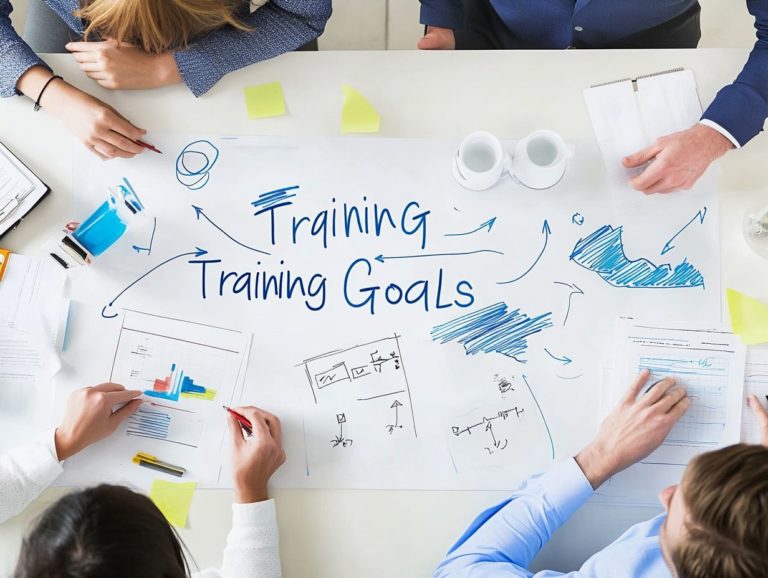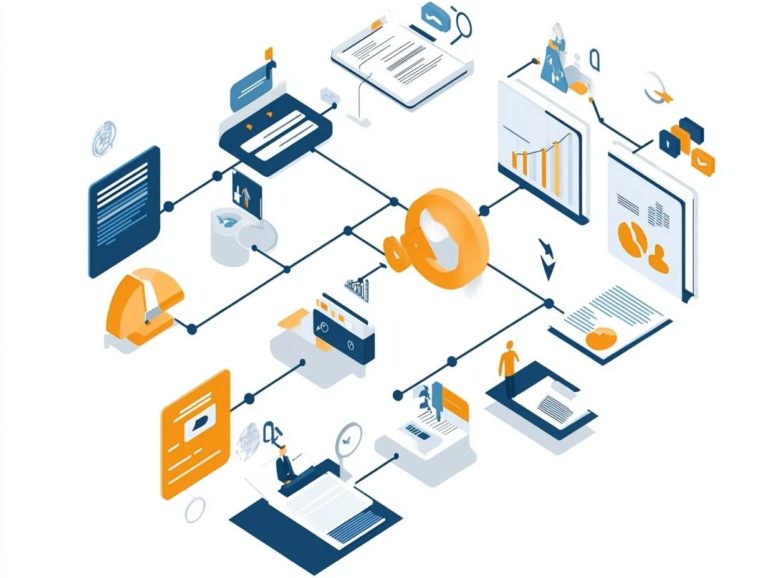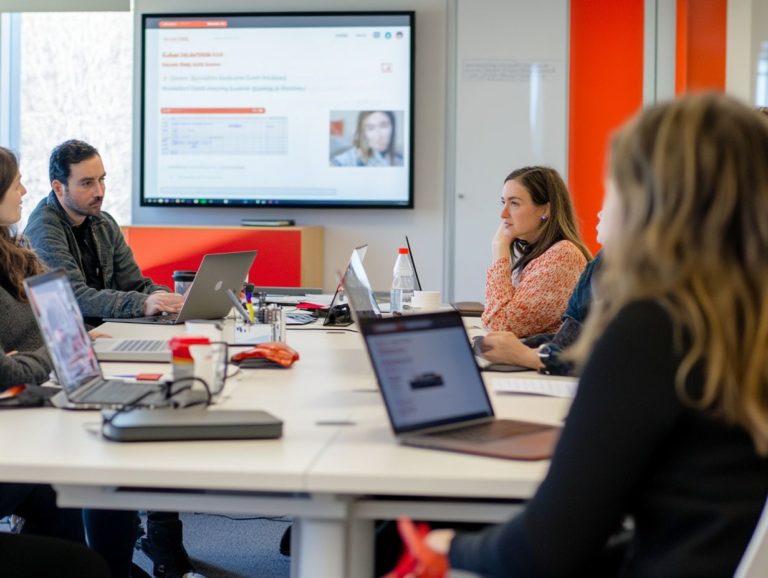How to Facilitate Learning Transfer After Training?
Learning transfer the ability to apply knowledge and skills gained in one context to another holds immense significance in maximizing the impact of training programs.
By grasping its definition and importance, you lay the groundwork to delve into the various factors that can influence this process at both individual and organizational levels. This article offers actionable strategies to facilitate effective learning transfer before, during, and after training sessions.
You ll also discover how to assess the effectiveness of these methods and confront common challenges that may emerge along the way. Dive in to uncover practical insights aimed at enhancing your training outcomes.
Contents
- Key Takeaways:
- Understanding Learning Transfer
- Factors Affecting Learning Transfer
- Strategies for Facilitating Learning Transfer
- Evaluating Learning Transfer
- Challenges and Solutions
- Common Obstacles and Ways to Overcome Them
- Frequently Asked Questions
- 1. How can I ensure that learning from a training is effectively transferred to the workplace?
- 2. What role does management play in facilitating learning transfer after training?
- 3. How can technology be used to facilitate learning transfer after training?
- 4. Are there any techniques or strategies that can help in transferring learning to the workplace more effectively?
- 5. How can I evaluate the success of learning transfer after training?
- 6. What can I do if I notice a lack of learning transfer after training?
Key Takeaways:
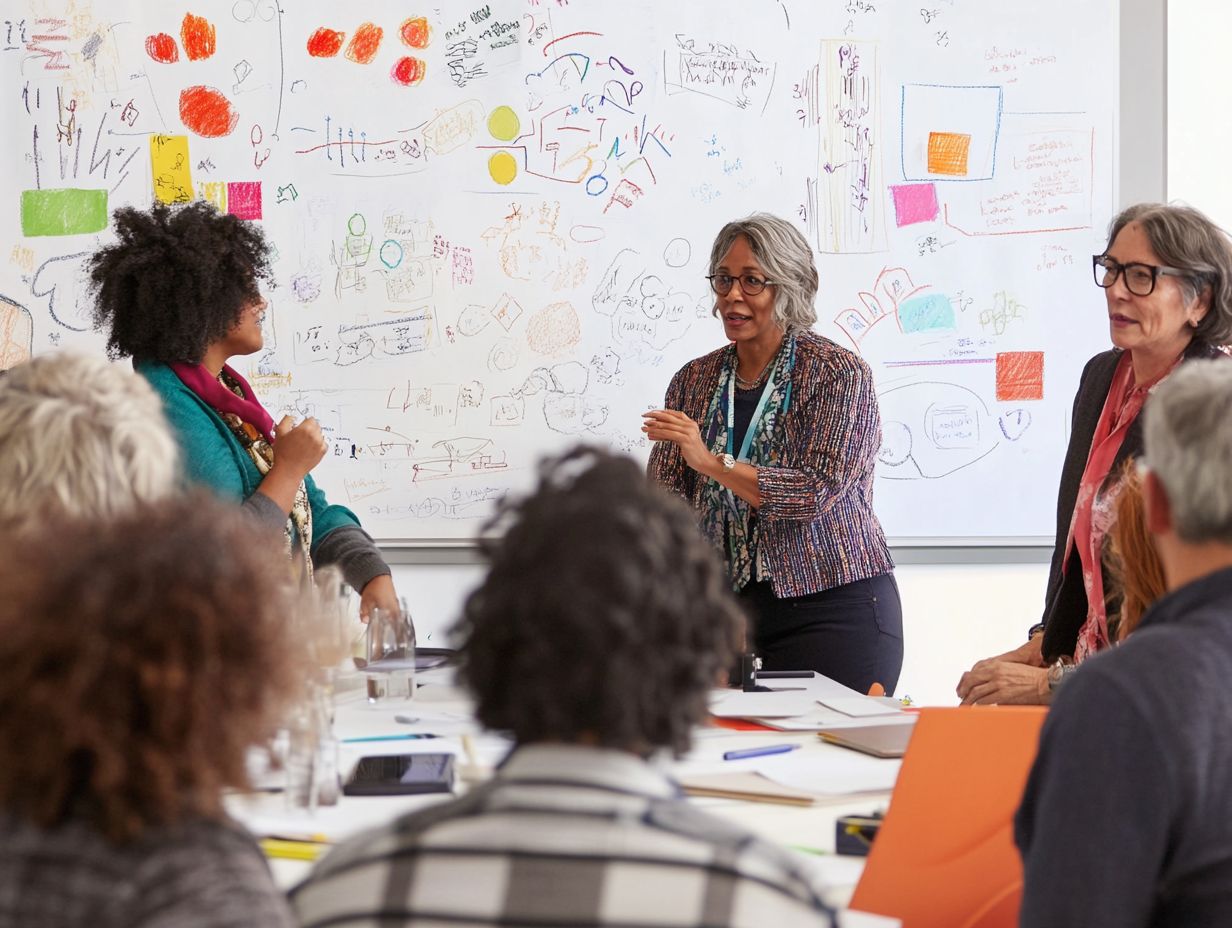
- Clearly define the desired outcomes of the training and communicate them to participants to increase their motivation and understanding of the importance of learning transfer.
- Utilize a variety of methods during and after training, such as job aids and follow-up sessions, to reinforce learning and support the application of new skills in the workplace.
- Regularly evaluate learning transfer through assessments and feedback from both participants and their managers, and address any identified gaps or challenges to ensure successful transfer of learning.
Understanding Learning Transfer
Understanding learning transfer means using the skills and knowledge gained in training to handle real-life job situations. It is essential for maximizing the effectiveness of your training programs in the workplace, as it directly impacts how well you can apply newly acquired skills to real-world scenarios.
Organizations such as Guroo Learning stress the need to align training with company goals. This alignment helps ensure that the knowledge you gain leads to better performance and productivity.
Effective learning transfer boosts your career development and enhances the overall capabilities of the workforce, fostering a culture of continuous improvement and engagement.
Definition and Importance
Learning transfer is about applying the skills and knowledge you ve gained during training to real-world job scenarios. It s vital for your performance on the job.
This process is key to making sure that the time and resources spent on workplace training translate into real, measurable results. When you can effectively transfer what you ve learned, your skills sharpen, directly boosting your productivity and efficiency.
Successful learning transfer ensures that your individual capabilities align seamlessly with the organization s goals, cultivating a culture of continuous improvement and flexibility.
By bridging the gap between theoretical learning and practical application, you re not just contributing to the organization s success; you re also building your own confidence and enhancing overall workplace morale.
Factors Affecting Learning Transfer
Several factors influence the effectiveness of learning transfer for you, particularly your individual characteristics and the organizational culture surrounding you. Both elements play crucial roles in shaping your motivation and engagement during training, ultimately affecting how well you can apply what you’ve learned in your work environment.
Individual and Organizational Factors
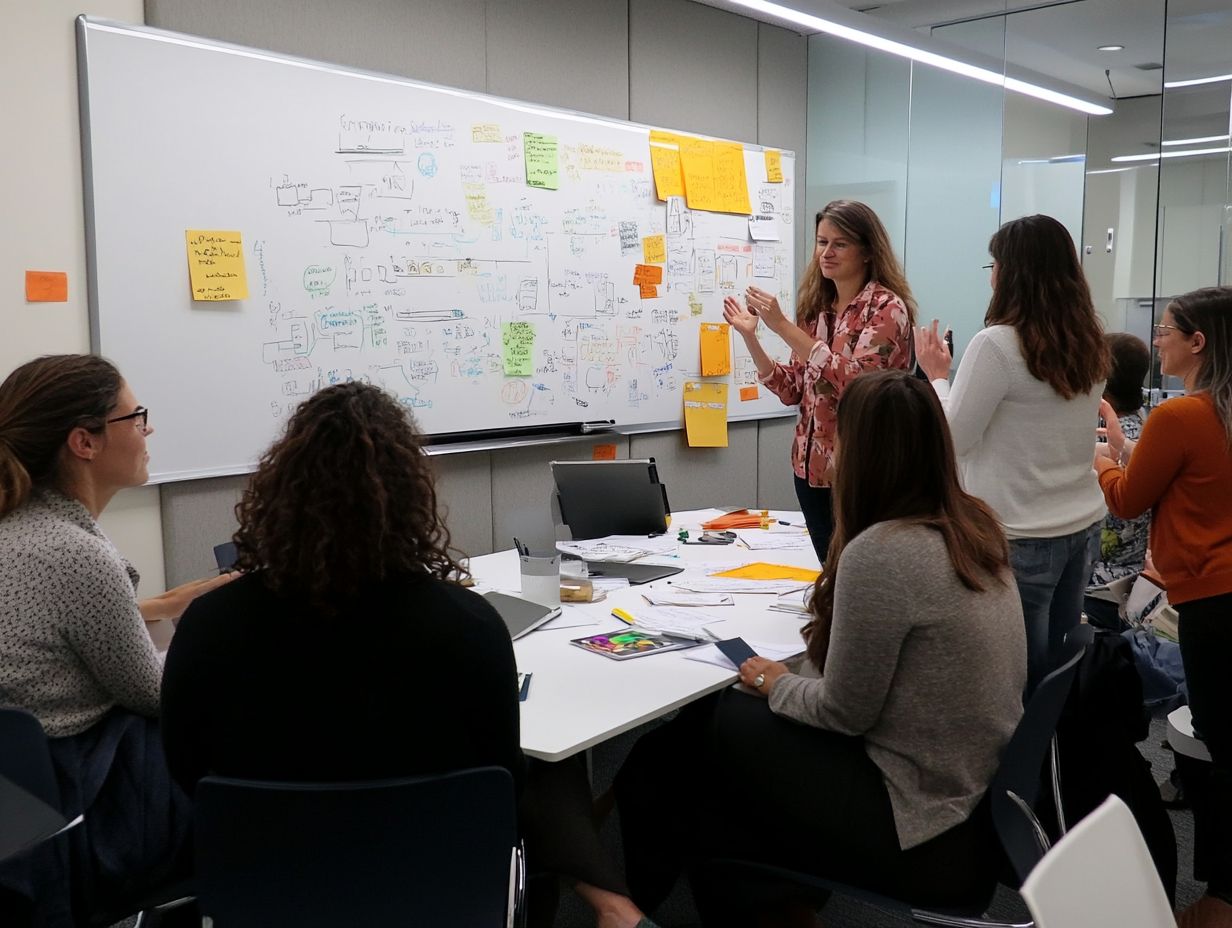
Individual factors, such as your personal motivation and learning preferences, along with organizational elements like support and feedback mechanisms, play a pivotal role in the success of learning transfer.
The alignment of your personal goals with the organization s objectives is crucial. When you see your aspirations reflected in the company s mission, you re more likely to dive into the learning process with enthusiasm.
Creating an environment where coaching and constructive feedback take center stage enables you to take risks and confidently apply new skills. This dynamic interplay between your individual dreams and the collective aspirations of the organization not only boosts your engagement but also fosters a culture of continuous improvement, ultimately propelling the success of learning transfer initiatives.
Strategies for Facilitating Learning Transfer
Implementing effective strategies to facilitate learning transfer is crucial for ensuring that training programs deliver measurable benefits for both employees and the organization. This approach enhances individual performance and boosts organizational success.
Pre-training Preparation
Pre-training preparation is a vital phase that requires assessing training needs and aligning learning objectives with your organizational goals to enhance the transfer of learning.
This phase ensures that your training initiative is strategically designed to address the skill gaps and knowledge requirements of the participants. By conducting a thorough review of what skills participants need, you can identify the competencies necessary for success and tailor your programs accordingly.
Establishing clear learning objectives is pivotal; it guides how the training is structured and helps learners grasp the relevance of what they are studying. These practices elevate engagement and enable a smoother transition from theory to practical application, ultimately leading to improved performance and productivity within your workplace.
During and Post-training Implementation
During and after your training implementation, ongoing coaching and structured feedback mechanisms are vital for reinforcing learning and ensuring that you apply your skills effectively in the workplace.
These strategies let you practice hands-on skills, which are essential for solidifying those newly acquired abilities. By offering personalized coaching, organizations can tackle individual challenges, significantly enhancing the learning experience.
Regular feedback sessions provide opportunities to receive constructive criticism and make real-time adjustments. This support sparks a culture of continuous improvement, encouraging you to explore various approaches and refine your techniques.
As a result, successfully applying your skills transforms into a collaborative effort, benefiting not only you but the organization as a whole and contributing to long-term performance outcomes.
Evaluating Learning Transfer

Evaluating learning transfer is crucial for assessing the effectiveness of your training programs. It allows you to pinpoint any gaps that may impede the practical application of skills in the workplace.
By understanding these dynamics, you can enhance training outcomes and ensure that knowledge translates seamlessly into real-world performance.
Assessing Effectiveness and Identifying Gaps
Assessing the effectiveness of learning transfer means analyzing how well training outcomes are applied in real-world situations and identifying any performance gaps among employees.
To accomplish this, implement various methodologies that include performance metrics like productivity levels, quality of work, and adherence to deadlines. Gathering feedback from employees through surveys or one-on-one interviews provides valuable insights into how relevant and applicable they find the training.
By reviewing this data, you can pinpoint specific areas where employees struggle to apply what they’ve learned. With this information, you can develop targeted training refreshers, coaching, or mentoring programs to bridge those gaps, ensuring that the training is impactful and aligned with your organizational goals.
Challenges and Solutions
Even with the best intentions to promote effective learning transfer, various challenges can hinder the successful application of training. This situation calls for tailored solutions to navigate and overcome these obstacles.
Common Obstacles and Ways to Overcome Them
Common obstacles to effective learning transfer include a lack of help from the organization, insufficient coaching, and inadequate feedback. Fortunately, these challenges can be addressed through targeted solutions.
Such hurdles often prevent you from applying newly acquired skills in real-world environments. This ultimately hinders overall growth within the organization. To confront these issues directly, fostering a culture that encourages open communication and collaboration is essential.
Establishing mentorship programs can significantly enhance coaching opportunities, providing personalized guidance tailored to your needs. Implementing a systematic feedback mechanism offers valuable insights into your progress and highlights areas for improvement.
By actively engaging in these strategies, organizations can create robust support structures that facilitate learning transfer. This leads to improved performance and higher retention rates of knowledge among employees.
Frequently Asked Questions
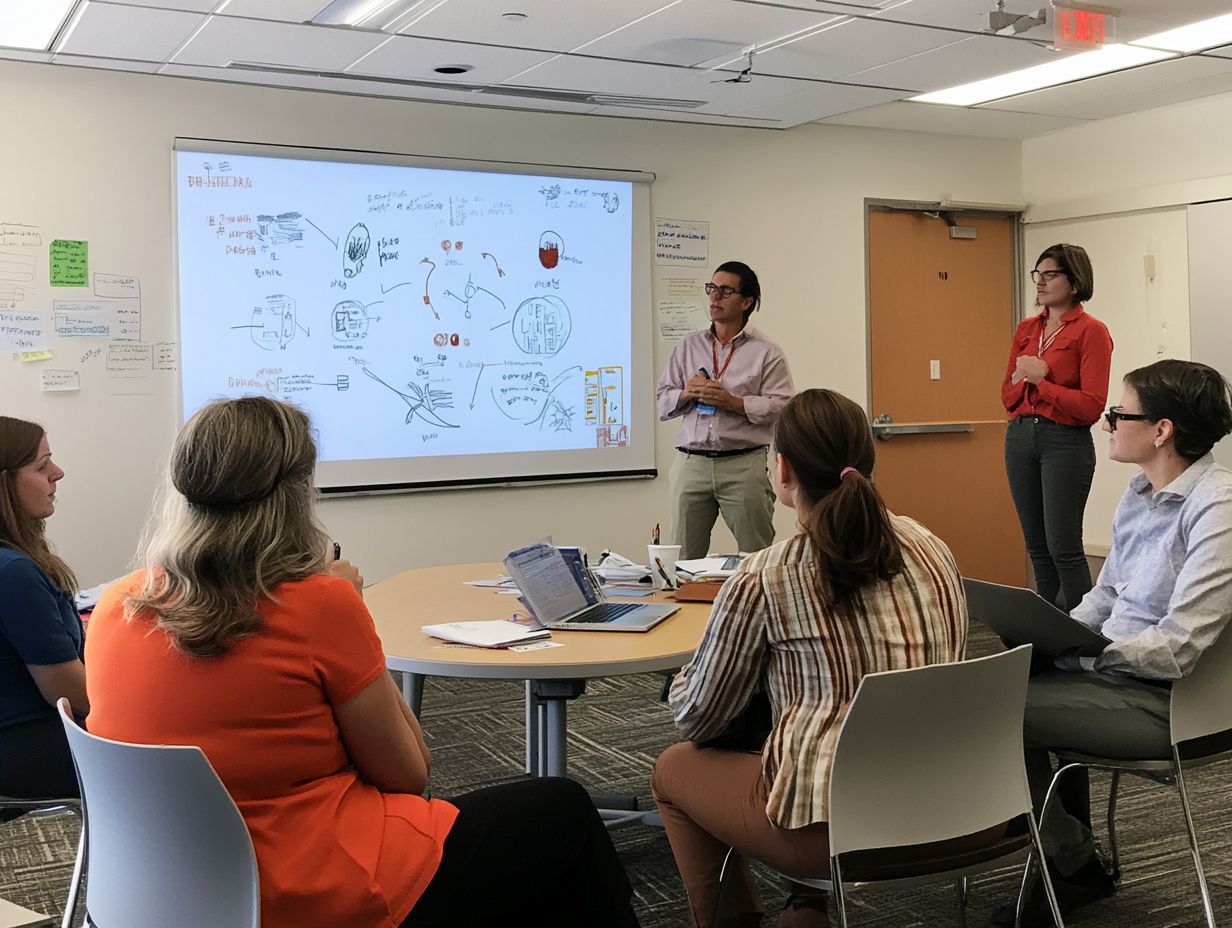
1. How can I ensure that learning from a training is effectively transferred to the workplace?
To facilitate learning transfer after training, first assess the learners’ needs and the specific objectives of the training. This helps in designing a program that is relevant and applicable to their jobs.
Incorporating post-training reinforcement activities, such as follow-up discussions and on-the-job application exercises, greatly aids in retaining and applying new knowledge and skills.
2. What role does management play in facilitating learning transfer after training?
Management support is crucial for translating learning from training into action in the workplace. Managers should be involved in the training process and communicate its importance to their team.
They can provide opportunities for employees to apply their new knowledge and skills and monitor progress, offering feedback to reinforce its significance.
3. How can technology be used to facilitate learning transfer after training?
You can leverage technology in various ways to support learning transfer. This includes providing online resources and tools for employees to access and reinforce their learning.
Creating virtual communities for learners to discuss and collaborate, and using mobile learning platforms for on-the-go application of knowledge are also effective strategies.
4. Are there any techniques or strategies that can help in transferring learning to the workplace more effectively?
One effective technique is using reflection and self-assessment activities. Encouraging learners to reflect on their learning and identify how they can apply it to their job enhances learning transfer.
Other strategies include providing job aids, creating a supportive learning environment, and involving peers in the learning process.
5. How can I evaluate the success of learning transfer after training?
Evaluating learning transfer involves assessing how learners have applied their new knowledge and skills on the job. This can be done through surveys, observation, and performance reviews.
Measuring the impact of learning on job performance and results is also essential, as this is the ultimate goal of learning transfer.
6. What can I do if I notice a lack of learning transfer after training?
If learning transfer is not occurring as expected, identify the barriers preventing it. This could include a lack of resources or support from management, ineffective training design, or a mismatch between training and job requirements.
Addressing these barriers and providing additional reinforcement and support can help facilitate learning transfer after training.
Ready to enhance your training experience? Start implementing these strategies today!


